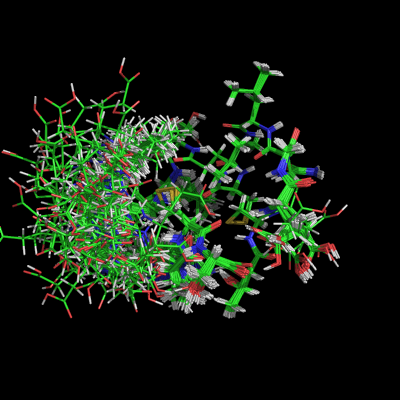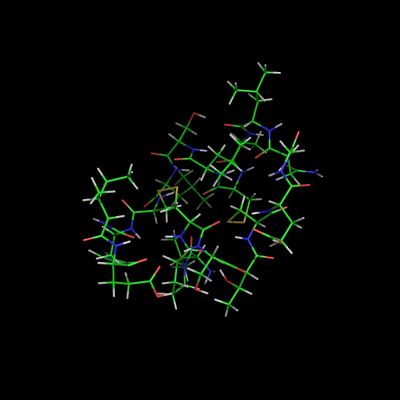This is a read-only mirror of pymolwiki.org
Difference between revisions of "States"
Jump to navigation
Jump to search
m (3 revisions) |
|||
| (One intermediate revision by the same user not shown) | |||
| Line 20: | Line 20: | ||
[[Category:Concepts]] | [[Category:Concepts]] | ||
[[Category:States]] | [[Category:States]] | ||
| + | [[Category:Movies]] | ||
Latest revision as of 03:55, 28 March 2014
Introduction to States
Working with States in PyMOL is a very common task. A State is one particular conformation of an object. For example, one could load an NMR ensemble and set all_states or use the command Split_States to see all entries in the NMR file. Another example could be the set of states from a molecular dynamic (MD) simulation. Each conformer in the MD ensemble could be viewed as a state in PyMOL.
If you are making a movie of a static coordinate set (such as a single crystal structure) then you have only one state. All objects in PyMOL can potentially consist of multiple states. For movies, see Frames.
Using States in PyMOL
- Upon loading an object you can separate each state into its own object with Split_States.
- States can be colored individually.
- One can show all states with the all_states setting.
- One can iterate over states using Iterate_State or change properties with states using the Alter_State function.

